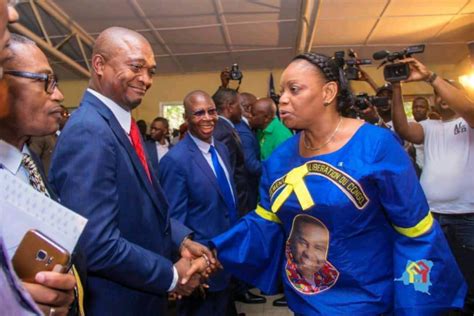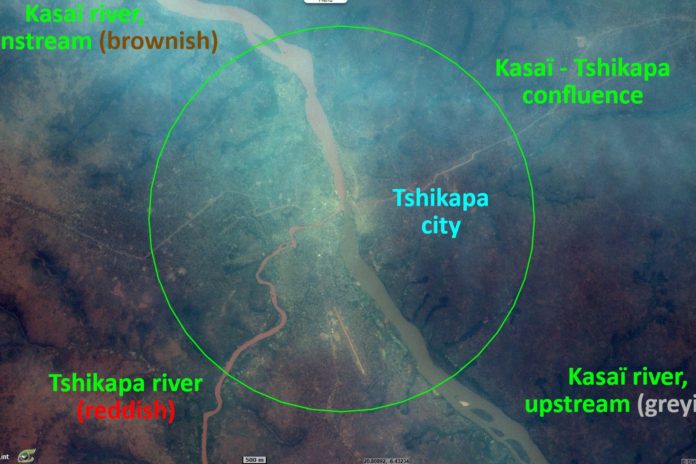By Nina Mitch
Kinshasa, DR Congo: Several rivers in DR Congo are now affected by severe pollution caused by mining activities in neighboring Angola. The Fimi, Kwilu, Kasai, and Tshikapa rivers in three different provinces are severely hit by pollution.
These provinces, including Kasai, Kwilu, and Mai Ndombe, are located in the west of the DRC. According to a report by Visio Terra based on satellite imagery, the Angolan diamond mine of Catoca, the 4th largest in the world, is at the root of this situation with red flows escaping since 20 July. Despite the Angolan authorities’ announcement to curb the large-scale spread of the pollutants, satellite images published by Visio Terra show flows recorded up to 9 August.
Initial results indicate, according to the governor of Kasai province Dieudonné Piemé Tutekot, that a ‘well-known diamond processing plant in Lunda-South has malfunctioned to the extent that toxic material has been discharged into the river

The consequences are significant in both countries Angola and the DRC. The aquatic fauna was destroyed. Two hippos died, dead fish still float in the reddish waters. Domestic use and consumption of these rivers are not only discouraged but prohibited, such as fishing, which is the main activity of the population in this region. Provincial authorities have observed a shortage of food and drinking water since the ban.
According to the National Institute for Biomedical Research, which has undertaken in-depth research into the toxic substances polluting the rivers, the consequences of this pollution on the health of the local population including children and pregnant women.
This is serious and irreversible, given that the people continue to consume the water despite warnings from the authorities, and the dead fish.
The Government says, more than 400 people have been reported with diarrhea as a result of water pollution.
According to the Deputy Minister of Environment, Eve Bazaiba, the progressive discoloration of the waters of this important tributary of the Congo River is on the doorstep of the city of Kinshasa, by transferring the flows. This constitutes a danger for the ecosystems of the DRC.
However, the Dep. Minister has reassured the members of the public that experts are working on the ground and carrying out serious and thorough research. In the next few days, humanitarian actions will be carried out on the ground, giving them alternative sources to water will not be easy

“There are samples, twice, that have been taken. Analyses have been made. We have the first elements that clearly show that these are the substances that have contaminated the water and that absorb the oxygen in the water. There is no life in the water. That’s why there are fish that are found dead” said the Dep. Minister.
Adding “There are cases of hippos found dead in Ilebo. There are also other elements. We want to know for sure. A process is being organized to go to the sister country, whose waters were contaminated by the factory. Because it is a question of contamination with material damage that has been recorded and also a danger to the human body,” said Minister Eve.
During the meeting of the Council of Ministers on Friday, Félix Tshisekedi said that the situation requires a rapid assessment of the damage to effectively manage the drama. The President of the Republic appealed to the solidarity of the international community to come to the aid of the population in danger.
The governor of the northern Lunda province in the Republic of Angola has already announced the start of work to clean up the waters of the Tshikapa River and is asking the Congolese government for a moratorium to initiate the process.














